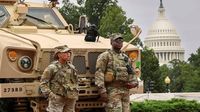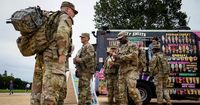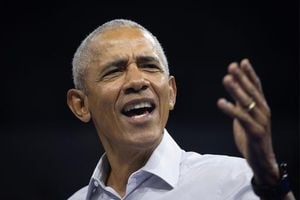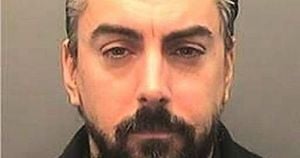In a dramatic escalation of federal intervention in local law enforcement, President Donald Trump has authorized the deployment of nearly 2,300 National Guard troops to Washington, D.C., arming them with M17 pistols and empowering them to conduct law enforcement duties under Title 32 status. The move, announced on August 22, 2025, marks a significant shift in the use of military personnel within the nation’s capital and signals the administration’s intent to broaden its crackdown on crime and illegal immigration across the country.
According to ABC News, Defense Secretary Pete Hegseth signed off on the new rules, allowing Guard members to carry weapons for personal protection and to participate in policing activities. Army Brig. Gen. Leland D. Blanchard, III, the commanding general of the D.C. National Guard, underscored the gravity of the decision, stating, “This decision is not something taken lightly.” He emphasized that Guard members would receive proper training before being permitted to carry their sidearms, and that the operation was being closely coordinated with local law enforcement partners.
The legal authority for this deployment rests on Title 32 of the U.S. Code, which places National Guard troops under the control of state governors but funds their mission federally. This arrangement, as legal experts have noted, creates a loophole around the 1878 Posse Comitatus Act, which bars the use of the military for domestic law enforcement. In this case, while the troops remain under nominal state control, their missions are largely directed by the White House, with six Republican governors—Louisiana, Tennessee, Ohio, South Carolina, Mississippi, and others—sending forces to D.C. at Trump’s request.
“You got to be strong, you got to be tough,” President Trump told Guard personnel during a visit to the U.S. Park Police Anacostia Operations Facility on August 21. “You got to do your job. Whatever it takes to do your job.” He suggested that the Guard presence could last for six months or even longer, promising sweeping physical improvements to the city and linking the effort to preparations for the upcoming 250th Independence Day celebration. “You do the job on safety, and I'll get this place fixed up physically, and we're going to be so proud of it at the end of six months,” Trump said.
The deployment began in mid-August, with unarmed National Guard troops stationed at tourist spots such as the Washington Monument. Initially, they were seen interacting with tourists and posing for photos, but the mission quickly expanded. By August 21, the force had swelled to 2,282 troops, many of whom were now authorized to carry weapons and conduct policing tasks.
Despite the show of force, crime statistics released by the D.C. Metropolitan Police Department tell a different story. Violent crime in the city has dropped by 26% since 2024, reaching its lowest level in three decades. Mayor Muriel Bowser, speaking on August 20, criticized the federal intervention, calling the Guard an “armed militia in the Nation’s Capital.” She pointed to the city’s falling crime rate and credited “a lot of hard work, changes to our public safety ecosystem, including changes to the law.”
Yet, the Trump administration has continued to tout its crackdown. On August 22, the White House announced more than 700 arrests in Washington, D.C., as part of the federal operation. U.S. Attorney for D.C. Jeanine Pirro, standing alongside Trump and Guard members, pledged to ensure that “every arrest you make, we're going to the longest way to make sure that we charge in those cases.” According to the D.C. Metropolitan Police, about 800 arrests were made in the first ten days of the federal takeover, a 25% increase from the same period in 2024 and a nearly 40% jump over 2023. However, NPR reported that it remains unclear how much overlap exists between the White House and D.C. police arrest data, and neither has released a full list of those arrested. This lack of transparency has led civil liberties advocates to question the validity and motivations behind the arrests. Jenn Rolnick Borchetta of the ACLU Criminal Law Reform Project asked, “Where are the receipts on these arrests?”
Criminal justice experts caution against using arrest numbers as a direct measure of public safety. As NPR notes, arrests do not always indicate actual crime rates, and only a fraction of arrests lead to charges or convictions. Strategies like “flooding the zone” with law enforcement can artificially inflate arrest numbers simply by increasing the number of officers looking for infractions. Tahir Duckett, executive director of the Center for Innovations in Community Safety at Georgetown Law, explained that many arrests reflect the priorities of law enforcement agencies rather than a true surge in criminal activity.
Meanwhile, the administration’s ambitions extend far beyond the capital. Pentagon officials confirmed to FOX News that up to 1,700 additional National Guardsmen are set to mobilize in 19 states between August and mid-November 2025, supporting the Department of Homeland Security’s efforts to crack down on illegal immigration and crime. States slated for deployment include Alabama, Arkansas, Florida, Georgia, Idaho, Indiana, Iowa, Louisiana, Nebraska, Nevada, New Mexico, Ohio, South Carolina, South Dakota, Tennessee, Texas, Utah, Virginia, and Wyoming, with Texas expected to see the largest Guard presence.
These Guardsmen will assist Immigration and Customs Enforcement (ICE) with case management, transportation, logistical support, and clerical duties related to processing illegal migrants—including data collection, fingerprinting, DNA swabbing, and photographing. While most deployments are still in the planning stages, operations in some states are set to begin as early as the first week of September. The deployments will operate under Title 32 Section 502F authority, which, like the D.C. operation, exempts them from Posse Comitatus restrictions.
President Trump has made no secret of his desire to replicate the D.C. model in other cities. “We're going to make it safe, and we're going to then go on to other places,” the president told a group of National Guardsmen and federal agents this week. He specifically named Chicago and New York as likely next targets for expanded operations. In the Oval Office on August 22, Trump said, “I think Chicago will be our next. And then we'll help with New York.”
While the White House frames these deployments as necessary to protect public safety and federal assets, critics warn of the risks inherent in such a heavy-handed approach. Policing experts cited by NPR note that a visible law enforcement presence can deter crime in the short term, but also increases the likelihood of confrontations and use-of-force incidents. John Roman, director of the Center on Public Safety and Justice at NORC, cautioned, “The more police and public interact, the more police uses of force there are going to be. This could be forcing somebody into handcuffs. It could be taking them to the ground. It could be something more serious.”
As the federal government ramps up its intervention in Washington, D.C., and prepares to extend its reach to other states, the debate over the proper role of the National Guard—and the balance between public safety and civil liberties—shows no sign of abating. With crime already at historic lows in the capital, the coming months will test whether these extraordinary measures deliver the promised results or simply raise new questions about the limits of executive power.





